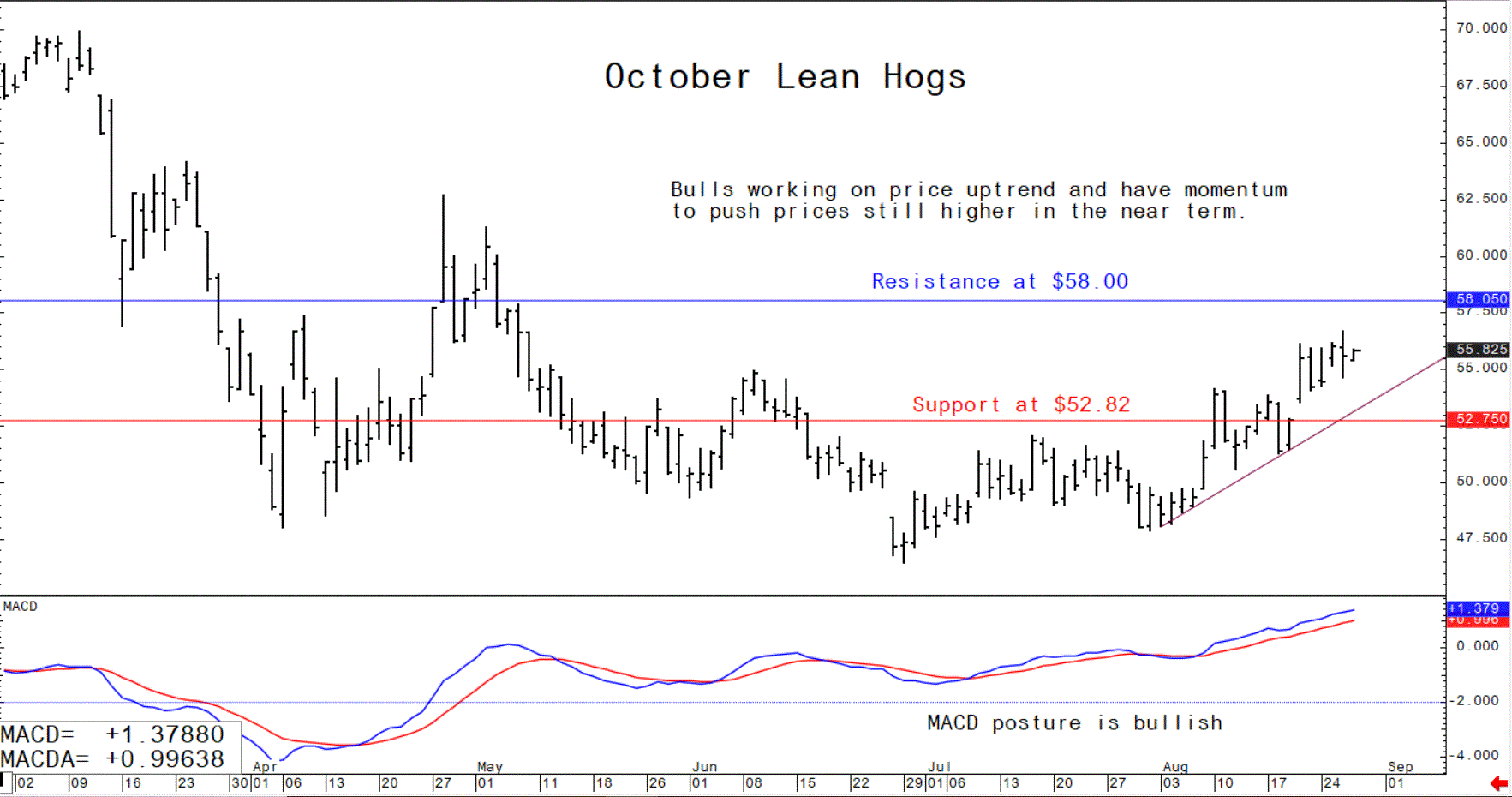



Pig outlook: lean hog futures are trending higher...finally
Read Jim Wyckoff's latest weekly analysis of the global hog market.The pig traders’ perspective
Lean hog futures prices this week hit a 3.5-month high, amid improving technical and fundamental factors. It does appear the hog futures market has bottomed out and that prices can work sideways-to-higher in the coming weeks. Rising beef prices and strong demand for pork from China will work in favour of the hog market bulls. However, burdensome U.S. pork supplies will probably constrain the price uptrend. Bottom line: Things are finally looking up for the pork industry.
The next week’s likely high-low price trading ranges
October lean hog futures--$53.55 to $58.00, and with a sideways-higher bias
December soybean meal futures--$296.00 to $310.00, and with a sideways-higher bias
December corn futures--$3.45 to $3.70, and a sideways-higher bias

© Jim Wyckoff
Latest US Department of Agriculture (USDA) reports, and other news
Strong weekly US pork exports
The weekly USDA export sales report, out Thursday, showed US pork net sales of 39,400 metric tons (MT) reported for 2020 were up 91 percent from the previous week and 56 percent from the prior 4-week average. Increases primarily for China (11,200 MT, including decreases of 400 MT), Mexico (10,700 MT, including decreases of 1,100 MT), Canada (6,600 MT, including decreases of 400 MT), Japan (3,300 MT, including decreases of 100 MT), and South Korea (1,900 MT, including decreases of 100 MT), were offset by reductions primarily for Nicaragua (200 MT). For 2021, net sales of 500 MT were primarily for Australia (400 MT). Exports of 32,600 MT were up 2 percent from the previous week, but down 2 percent from the prior 4-week average. The destinations were primarily to Mexico (9,900 MT), China (9,500 MT), Japan (3,500 MT), Canada (3,200 MT), and South Korea (1,500 MT).
China port city imposes new regulations for meat imports
On 18 August the city of Shenzhen in South China imposed new COVID-19 handling and testing requirements for imports of frozen meat and seafood, USDA this reported. “There is concern these new measures, which are inconsistent with international guidelines, could contribute to delays at Shenzhen ports and dampen consumer demand for imported meat and seafood,” said USDA. Meantime, despite widespread news stories to the contrary, the city of Guangzhou – a major metropolis in South China – has not/not suspended imports of meat and seafood. The misinformation seems to have stemmed from an earlier notice a cold storage association in Guangzhou sent to its membership asking them to suspend meat and seafood imports from undefined COVID-affected areas.
Friendly USDA Cold Storage report for pork
Monday’s USDA Cold Storage report was a positive demand surprise. Frozen US pork stocks stood at 458.9 million pounds as of 31 July, which was a 1.3-million-pound decline from the end of June and the lowest in nine years. Frozen US pork stocks were down a dramatic 152.8 million pounds (25.0 percent) from year-ago, signalling strong demand amid rising supply.









